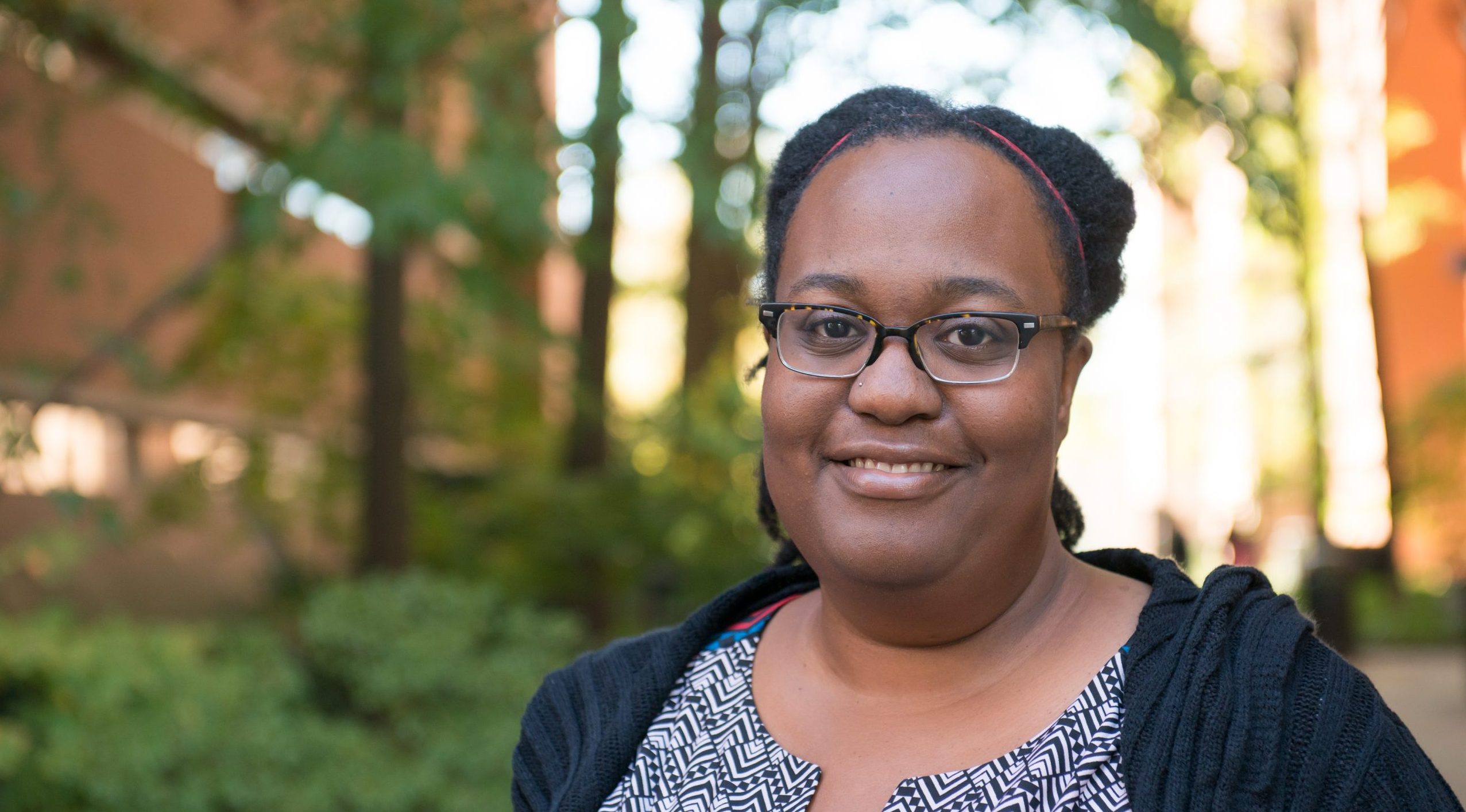Elizabeth Patton’s new book Easy Living: The Rise of the Home Office (2020, Rutgers University Press) explores how Americans think about the modern home office and why. Patton’s book is a historical view of how marketing and popular media have shaped how mostly white, heterosexual, upper-middle-class families in the United States have talked about working from home. Due to COVID-19, remote work has hit unprecedented highs, but Patton’s scholarship reveals that it’s far from a new idea.
“I was interested in learning about how people talked about working from home from the early 19th century to today,” says Patton, an assistant professor of media and communication studies at UMBC. “I wanted to understand how certain public figures, technology and real estate companies, film and TV contributed to these conversations and shaped today’s idea of working from home.”
Patton explains this phenomenon, as her family redefines work spaces during COVID-19, in her latest article: “In the work-from-home battle for space, women are the reluctant nomads.” Originally published by The Conversation, the article has been republished by CNN, Fast Company, and others, reaching nearly 140,000 reads so far.
The gendered home office
Patton’s research reveals how early-19th century advertising and media portrayed women in two traditionally private spaces: the kitchen and the bedroom. This shifted during WWII as ads encouraged women to work jobs men had to leave behind. However, by the 1950s many women were expected to leave careers and return to domesticity.
Patton found advertising campaigns from phone companies motivating women to work more efficiently by having a phone line installed in the kitchen and in the bedroom. “Typewriter ads also encouraged women to work as typists from their kitchen office,” shares Patton. “This work was not to advance a career but to support their household economy.”
Men, on the other hand, occupied the public space in the home—the living room or den—to work, relax, or entertain. Patton’s research also describes how advertising and media discussed the work men brought home from the office as a way for them to maintain a work-life balance, especially with the rise of long commutes. Real estate and furniture ads lured urban families to the suburbs with the promise of a garage or a home office to give men more family time and bigger kitchens to help women more efficiently run their household.
Hollywood’s influence
Patton made a particularly compelling, unexpected discovery during her research at the Library of Congress: evidence of the influence of Hugh Hefner, the founder and editor-in-chief of Playboy magazine. Hefner played a significant role in conceptualizing the modern work-from-home lifestyle, the bachelor pad, and the “man cave.”
“While he is an extremely problematic figure, there is no denying his influence in this area,” explains Patton. Research shows how Hefner used advances in phone, computer, television, and architecture to conceptualize private and public home spaces for a successful work-life balance, making commutes irrelevant.
Family life on TV
Bill Cosby, a disgraced public figure, helped transform the portrayal of men and women having successful careers and a thriving family life on television, says Patton.
“The Cosby Show was a primetime family show that created an aspirational lifestyle,” shares Patton. “It was a very purposeful portrayal of how men, working as doctors, lawyers, or writers, could have a successful and fulfilling work-life balance while at the same time supporting their wives in leaving the home to pursue similar careers.”
Patton also shares how it wasn’t until the 1980s and early 1990s, with second-wave feminism, that women were more frequently portrayed in advertising and popular media as having a career outside of the home or having a home office. Still, these portrayals were seen as controversial, especially when central female characters were single working mothers. And if women had to bring work home, their office was still the kitchen.
COVID-19 and the home office evolution
Patton’s book comes at an unprecedented time when many adults and children have had to shift their work and learning spaces from the public office and school to the private home. This change has reopened questions about private and public work spaces and work-life balance, as well as class, equity, and access.
“I’m always thinking about who is missing or left out in the conversation. I’m telling this history, but this history is not possible without depending on people of color and people working in service jobs,” explains Patton. “This is where class and race intersect. And it is necessary to keep this idea of working from home going, even more so now with a pandemic.”
Banner image: Patton on campus in academic row. Photo by Marlayna Demond ’11.

